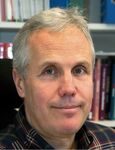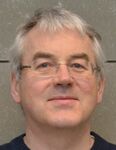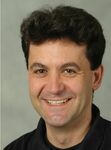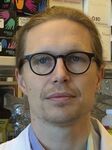Previous projects
These are some examples of my largest past projects, described very briefly.
I have also been funded by The Swedish Research Council, STINT, FORMAS, and VINNOVA for many years.
BioWings was funded by EU Horizon 2020 framework, Future Emerging Technologies (FET) Open program. Bio-compatible electrostrictive smart materials for future generation of medical micro-electro- mechanical systems , nr. 801267. Coordinated by DTU, partners included LU, AcouSort AB, DayOne project managers, Ecole Polytechique Federale de Lausanne, Weizmann Institute of Science, and Piemacs. It ran during 2018-2022. Total budget MEUR 3.
External link to project.
The project Lab-on-a-chip microvesicle diagnosis for clinical use (or Vesicle Lab for short), was funded by the Swedish Foundation for Strategic Research (SSF) during the years 2014-2020. MSEK 33.

Thomas Laurell (LU, project leader). Microvesicles can contain disease markers that are cumbersome to isolate using ultracentrifugation. Acoustic trapping of sub-micrometer vesicles can be used to streamline the process.

Hans Lilja (LU/Oxford/MSKCC). Several biomarkers in the prostate have high diagnostic and prognostic potential, but better, non-invasive study methods are needed. Total exosomal RNA is increased in prostate cancer patients compared to healthy men.

David Erlinge (LU/SUS). There are three mail drivers of cardiovascular disease development: endothelial dysfunction, inflammation, and platelet activation. All three processes release microparticles to communicate and regulate cardiovascular physiology.

Stefan Scheding (SUS). The positive effects of stem cell therapy are due to the released cytokines and chemokines from the administered cells, acting in paracrine fashion. Activated stem cells also produce microvesicles that can reprogram neighboring cells. Photo: Katarina Branzen.
Next generation in cell handling in medical diagnostics (NGCHMD, Dnr KAW 2012.0023) was a center grant funded by the Knut and Alice Wallenberg Foundation. The project ran 2013-2017. MSEK 33.5.

Thomas Laurell (LU, project leader). Ultrasonic waves can sort different cell types based on their specific aucoustic fingerprints. This technology called acoustophoresis enables gentle and precise cell sorting for downstream bioanalytical and preparatory experiments.

Henrik Bruus (DTU). Acoustophoretic microchips were traditionally developed by trial and error. In collaboration with Henrik Bruus, DTU, we aim for rational design by developing novel mathematical models for in silico analyses of the acoustic 3D resonance patterns of acoustophoresis chip designs.

David Erlinge (LU/SUS). Cardiovascular disorders. In collaboration with David Erlinge we develop ultrasonic tweezers, enabling real-time unbiased response studies of red blood cells in their quiescent state as a function of molecular stimuli.

Hans Lilja (LU/MSKCC/Oxford). Detecting the circulating tumor cells, that can migrate and metastasize at random locations in the body is very important. In collaboration with Hans Lilja we develop acoustophoresis for label-free isolation, and molecular analysis of prostate cancer cells spread to the blood circulation.

David Ulmert (LU/MSKCC). David Ulmert develops novel antibody-directed PET markers based on zirconium-89-conjugated monoclonal antibodies against prostate-specific antigen (PSA) or kallikrinein-related peptidases in order to detect spreading prostate cancer with high resolution.
